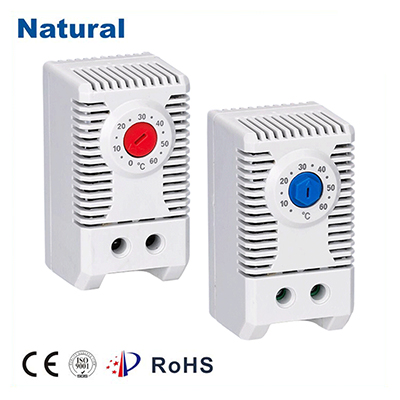文章正文:

Temperature control is a crucial aspect of many industrial and household applications, ensuring that processes run smoothly and products are of high quality. One essential tool in achieving precise temperature control is the bimetal thermostat. In this article, we will explore the workings and applications of bimetal thermostats. What is a Bimetal Thermostat? A bimetal thermostat is a temperature-sensitive device composed of two different metals bonded together. These metals have different coefficients of thermal expansion, which means they expand and contract at different rates when exposed to temperature changes. This unique characteristic forms the foundation of bimetal thermostat operation. How Does It Work? Inside a bimetal thermostat, the two metals are typically layered together in a strip or coil. When the temperature changes, the bimetal strip bends due to the unequal expansion of the two metals. This bending movement is utilized to control electrical contacts, making or breaking a circuit to regulate temperature. For instance, in a heating system, as the temperature drops below the desired setpoint, the bimetal strip bends, closing an electrical circuit to activate the heater. Conversely, when the temperature rises above the setpoint, the strip straightens out, breaking the circuit and turning off the heater. Applications Bimetal thermostats are versatile and find applications in various industries and devices: Home Appliances: Bimetal thermostats are commonly used in household appliances such as ovens, refrigerators, and irons. They ensure that these devices maintain consistent and safe operating temperatures. HVAC Systems: Heating, Ventilation, and Air Conditioning (HVAC) systems employ bimetal thermostats to regulate indoor temperatures. These devices help maintain comfort and energy efficiency in residential and commercial buildings. Automotive: Bimetal thermostats are crucial in automotive engines. They regulate the engine’s temperature, ensuring it operates within the optimal range for performance and longevity. Industrial Processes: Many industrial processes require precise temperature control. Bimetal thermostats are used in machinery and equipment to ensure that temperature-sensitive materials and products are produced with high quality and consistency. Advantages of Bimetal Thermostats Bimetal thermostats offer several advantages: Cost-Effective: They are cost-effective solutions for temperature control, making them accessible for a wide range of applications. Reliability: Bimetal thermostats are known for their reliability and durability, as they have no moving parts that can wear out quickly. Wide Temperature Range: These thermostats can operate over a broad temperature range, from sub-zero temperatures to extremely high temperatures, depending on the materials used. Safety: They are inherently safe, as their simple design ensures fail-safety in case of malfunction. Challenges Despite their numerous advantages, bimetal thermostats do have limitations. They may not offer the precision required for some highly sensitive applications, and their response time may be slower compared to more advanced temperature control technologies like digital controllers. In conclusion, bimetal thermostats play a vital role in temperature control across various industries and everyday devices. Their simplicity, reliability, and cost-effectiveness make them a popular choice for many applications. While they may not be suitable for every situation, understanding their basic principles and capabilities can help you make informed decisions when it comes to temperature control in your projects and systems.